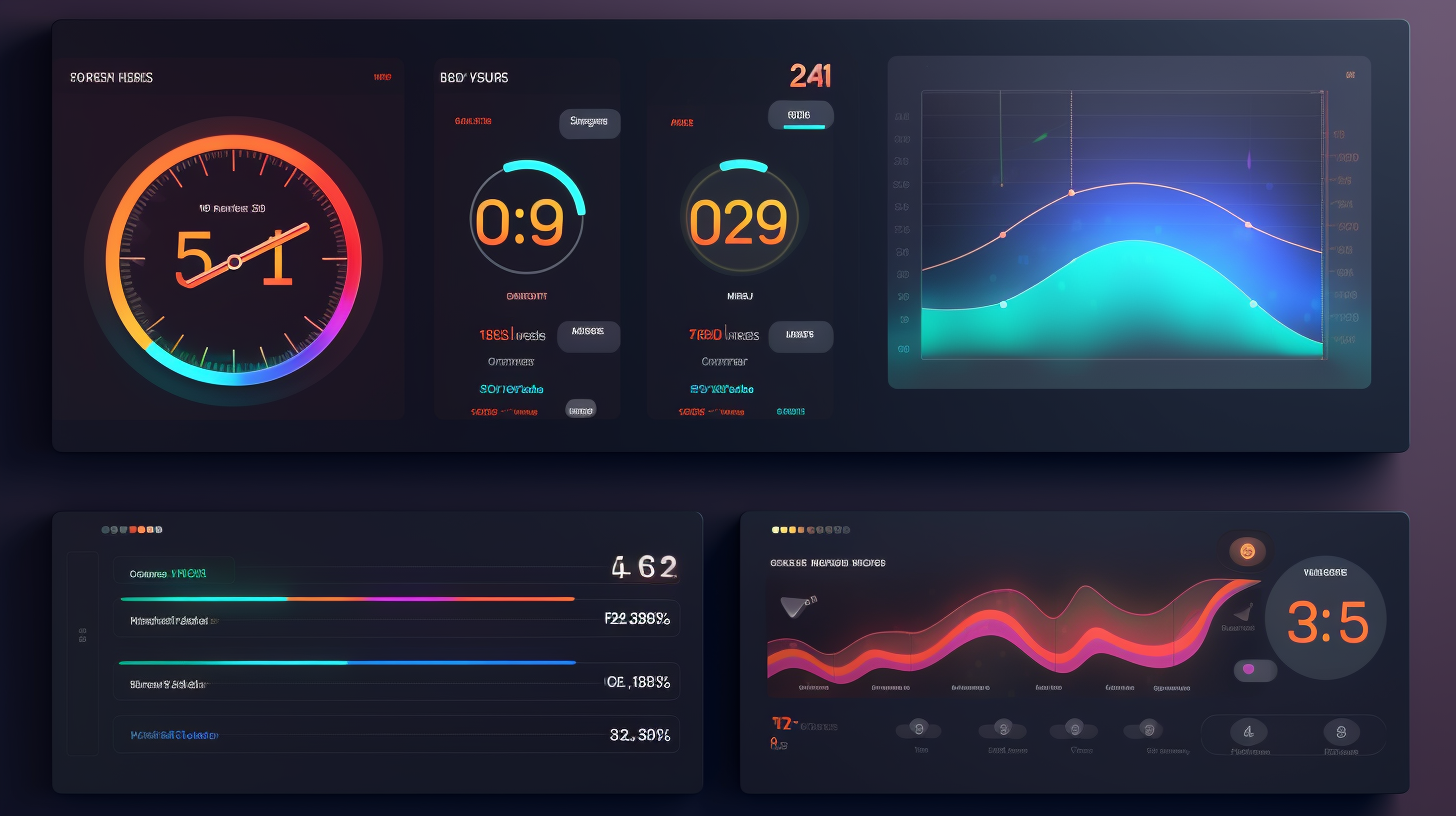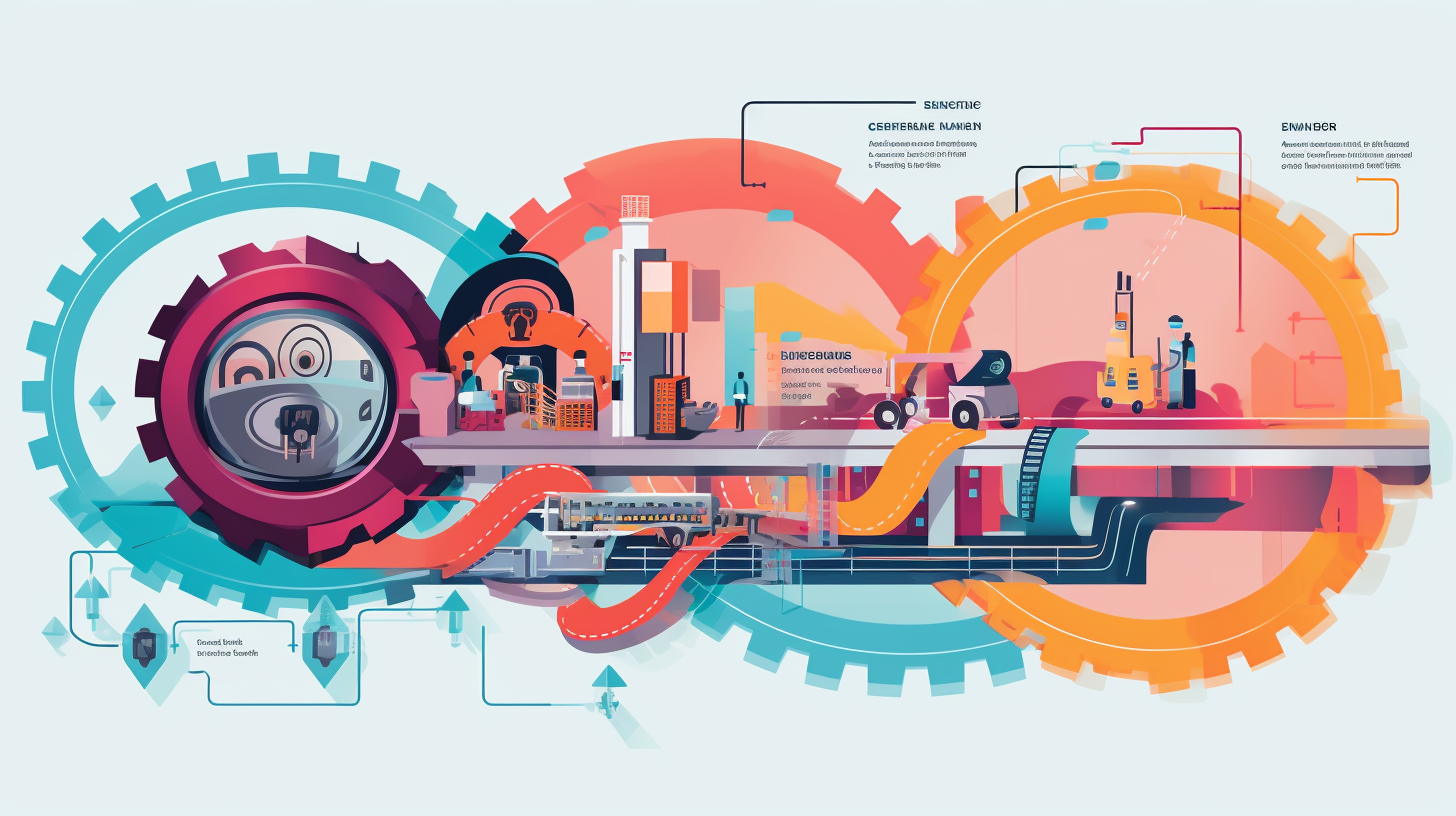Site Reliability Engineering (SRE) is a crucial aspect of IT that has gained popularity in recent years due to its ability to improve the reliability and scalability of software systems. SRE is an implementation of DevOps that focuses on operational excellence and efficient software development practices. It originated from Google, where it was developed to manage the company’s massive infrastructure and ensure the reliability of its services.
The core tenets of SRE include automation, monitoring, incident response, and post-mortem analysis. SRE teams are responsible for designing and implementing systems that are reliable, scalable, and efficient. They work closely with software development teams to ensure that the software is developed with reliability and scalability in mind.
Adopting SRE practices can bring several benefits to organizations, including improved business efficiency, better customer satisfaction, and reduced downtime.
This article will break down the principles and best practices of SRE, how it originated from Google, and how it can be implemented to achieve reliability and customer satisfaction.

What Is Site Reliability Engineering?
Site Reliability Engineering (SRE), which applies principles of software engineering to IT operations, is now an integral aspect of managing application performance and stability in hybrid cloud environments and originated from Google as its approach to service management.
SRE is a modern approach that aims to create ultra-scalable and highly reliable software systems. It focuses on automating and scaling applications and production environment systems to ensure system reliability and software efficiency.
SRE principles and best practices facilitate system and service reliability by embracing risk, setting predetermined performance targets, eliminating toil, monitoring services, and automating wherever possible. SRE outlines four primary metrics for monitoring systems: latency, traffic, errors, and saturation. It also emphasizes the importance of releasing software in a consistent and repeatable manner, simplifying systems, and collaborating. Achieving reliability must be intentional and extend through the entire product lifecycle.
SRE offers overarching principles that can guide production management, providing organizations with the tools to build robust service level objectives and agreements, determine acceptable levels of reliability, empower management to take on predetermined levels of risk and create a budget with room for error. SRE stresses collaboration, integrating teams at every possible juncture, and accepts failure as a necessary path to reliability.
The SRE approach offers significant advantages, such as using engineers with software expertise, designing and implementing automation to replace human labour, and delivering the reliability needed to achieve customer satisfaction.

The Core Tenets Of SRE
The fundamental principles of SRE encompass a set of core tenets that are critical to achieving reliable and scalable software systems. These core principles help in managing application performance and stability in hybrid cloud environments. The SRE practices are built on the foundation of continuous learning and improvement, which ensures that the system is always evolving to meet the changing needs of the users.
One of the core principles of SRE is the elimination of toil, which aims to reduce the manual effort required to keep the system running. This is achieved by automating routine tasks, which not only reduces the workload but also minimizes the risk of human error.
Monitoring is another critical principle of SRE that ensures all services are running as intended. SRE outlines four primary metrics for monitoring, which are latency, traffic, errors, and saturation. These metrics help in identifying and addressing issues before they impact the users.
SRE practices are designed to deal with complex systems and ensure that they are highly reliable. The SRE approach emphasizes simplicity and reducing complexity, which helps in mitigating the risk of failure. Continuous learning and improvement are also key principles of SRE, which encourage teams to learn from their mistakes and evolve their practices to improve the system’s reliability.
Ultimately, the core principles of SRE enable teams to build and maintain highly reliable software systems that meet the needs of the users.

The Organisational Structure Of SRE
Regarding the organizational structure of SRE, it is essential to understand the roles and responsibilities of the individuals involved in the implementation and management of this approach.
The primary team responsible for SRE is the Site Reliability Engineer (SRE) team. The SRE team is typically composed of both software developers and engineers with expertise in systems, networks, and operations.
The SRE team works closely with the development team responsible for creating and maintaining the software application or service. The product development teams focus on building new features and functionality while the SRE team focuses on operational efficiency, reliability, and scalability.
The SRE team’s role is to ensure that the application or service meets the business objectives while maintaining a high level of reliability and availability.
The collaboration between the development team and the SRE operations team is critical to the success of the SRE approach. The SRE team provides feedback on the operational requirements of the application or service, while the development team provides feedback on the technical requirements of the application or service.
Together they work to create a reliable, scalable, and efficient system that meets the business objectives. The SRE approach requires a strong partnership between the development team and the SRE team.

The Benefits Of Adopting SRE Practices
Implementing SRE practices can lead to significant improvements in system reliability and scalability, ultimately resulting in increased business efficiency and customer satisfaction. By adopting SRE, organizations can improve their service reliability through the implementation of service level objectives (SLOs) and the elimination of toil.
Automation tools can also be utilized to automate tasks and increase system performance, allowing for more efficient use of resources. Improving service reliability through SRE can directly impact the customer experience by providing a more stable and efficient service. By embracing risk and designing systems with simplicity in mind, SRE can help prevent potential disasters and quickly resolve any issues that arise.
Additionally, investing in automation tools can help reduce the burden on human operators and improve system performance, ultimately leading to a more positive customer experience. Overall, adopting SRE practices can lead to a more efficient and reliable system, resulting in improved business outcomes, efficiency and customer satisfaction. By embracing the core principles of SRE, organizations can improve service reliability, eliminate areas of toil, and invest in automation tools to improve system performance.
Ultimately, this focus on system scalability and reliability can help organizations achieve their business goals and provide a better customer experience.

SRE Best Practices For Software Development
Unsurprisingly, ignoring the use of SRE best practices for software development can lead to a range of avoidable complications in an organization.
One key best practice is to eliminate toil, which refers to manual, repetitive tasks that can be automated. This can improve pipeline velocity and scalability of larger systems.
Another important SRE practice is capacity planning, which involves forecasting demand and ensuring sufficient capacity and redundancy to meet it. SRE teams should be in charge of this and provisioning should be conducted quickly and correctly to ensure efficient resource use and cost control.
Incorporating SRE principles can also help align development goals from the start. Service owners should determine acceptable service levels of reliability and build robust service-level objectives and agreements, empowering management to take on predetermined levels of risk and create a budget with room for error.
Monitoring services is crucial for system reliability, as it ensures that all services are running as intended. SRE outlines four primary metrics for all monitoring: latency, traffic, errors, and saturation.
Additionally, SRE stresses collaboration between teams to improve system simplicity and achieve reliability. SRE accepts failure as a necessary path to reliability and emphasizes automation to replace human labour, allowing SREs to engage in creative, innovative work.

Monitoring And Alerting In SRE
Effective monitoring and alerting are critical components of the SRE approach that can evoke a sense of confidence and trust in the reliability of software systems. SRE teams rely on monitoring tools to ensure that all services are running as intended and that any potential problems are identified and addressed before they escalate into severe issues.
Site reliability engineering managers must set up monitoring tools to track the four primary metrics of latency, traffic, errors, and saturation, which provide a comprehensive overview of system performance. SREs use monitoring tools to establish service level indicators (SLIs) and service level agreements (SLAs), which outline predetermined performance targets for a particular service. These performance targets are linked to specific business objectives, and SREs must ensure that the service operates within these parameters.
Monitoring tools are also critical in incident response, as they allow SREs to detect issues and respond quickly to prevent further damage. Playbooks are useful in incident response, as they provide a step-by-step guide for handling incidents, improving the time to resolution (MTTR).
Monitoring and alerting are essential practices in the SRE approach, allowing teams to detect problems before they escalate into significant issues. Site reliability engineering managers must establish monitoring tools and SLAs to ensure that service performance aligns with specific business objectives. Incident response times can be significantly reduced by using playbooks, which provide a standardized approach to incident resolution.
Overall, effective monitoring and alerting are essential for achieving high reliability and availability in software systems.

Incident Response And Post-Mortems
Incident response and post-mortems are crucial aspects of the SRE approach, as they provide valuable insights into the root causes of incidents and enable teams to develop proactive strategies to prevent their recurrence in the future. The SRE team must prioritize incident response to minimize the impact on service quality and customer satisfaction. The team should have a well-defined incident response process that includes clear communication channels, predefined roles and responsibilities, and a prioritized incident response plan.
Post-mortems are essential for improving the service and preventing similar incidents in the future. The SRE team should conduct a thorough analysis of the incident, including its root cause, impact, and mitigation strategies. The post-mortem report should identify the lessons learned and any changes made to prevent similar incidents from occurring in the future. The SRE team can use monitoring tools and error budgets to evaluate the effectiveness of their post-mortem process and improve their incident response strategies.
Incident response and post-mortems are critical components of the SRE approach to ensure service quality and customer satisfaction. The SRE team must have a well-defined incident response process and post-mortem analysis to identify the root cause of incidents and develop proactive strategies to prevent their recurrence in the future. Monitoring tools and error budgets can help evaluate the effectiveness of the incident response and post-mortem process, enabling the team to continuously improve their service delivery.

Continuous Improvement In SRE
Continuous improvement is a fundamental aspect of the SRE approach, enabling teams to identify areas of improvement and refine their processes to achieve greater efficiency and reliability. SRE teams use a variety of tools and methodologies to ensure continuous improvement, such as service level agreements (SLAs) and eliminating toil.
SLAs are a critical component of SRE, outlining performance targets that must be met to ensure system reliability. By setting measurable and achievable goals, SRE teams can focus on improving specific areas of their system and ensure that they meet their customers’ needs.
Eliminating toil is another core principle of SRE, as it reduces manual and repetitive tasks that can harm system reliability. SRE teams use automation tools and processes to eliminate toil, which frees up time to focus on more complex tasks. Automation also enables SRE teams to scale their systems and services without increasing the size of their team, which can lead to significant cost savings. By continuously identifying areas of toil and automating those tasks, SRE teams can ensure that their systems are reliable, efficient, and scalable.
Capacity planning is another critical aspect of continuous improvement in SRE. SRE teams must ensure that their systems have sufficient capacity to meet demand while maintaining reliability. By monitoring their systems and services, SRE teams can identify potential bottlenecks or areas of inefficiency and address them before they become major issues. Capacity planning also helps SRE teams to optimize their resource use, ensuring that they can provide the best possible service to their customers while keeping costs under control.
Through continuous improvement, SRE teams can create highly reliable, efficient, and scalable systems that meet the needs of their customers.

SRE Tools And Technologies
One of the key aspects of Site Reliability Engineering (SRE) is the use of various tools and technologies to ensure system reliability and scalability. Google SRE teams have developed several tools to manage their production systems, including Borg, Kubernetes, and Vitess. Borg and Kubernetes are popular container orchestration tools used for scheduling and deploying containers, while Vitess is a database clustering system used to scale MySQL databases.
In addition to these tools, SRE teams also use monitoring and alerting tools to ensure system health. Google SRE teams use Prometheus for monitoring and Grafana for the visualization of system metrics. They also use PagerDuty for incident response and communication between teams.
Using these tools, SRE teams can quickly identify and respond to system issues, as well as monitor system health to prevent issues from occurring in the first place.
Overall, the use of various tools and technologies is critical to the success of SRE and service management. These tools allow SRE teams to automate processes, monitor system health, manage production systems and quickly respond to incidents. Through the use of these tools, SRE teams can ensure the reliability and scalability of their production systems, ultimately leading to improved customer satisfaction and business efficiency.

Implementing SRE In Your Organisation
Implementing Site Reliability Engineering (SRE) in an organization requires a deliberate and intentional approach that aligns development goals, empowers management to take on predetermined levels of risk, and invests in automation tools to eliminate potential disasters.
To successfully implement SRE in your organization, it is crucial to determine acceptable levels of reliability and build robust service level agreements (SLAs) that outline predetermined performance targets. In addition, it is important to eliminate areas of high toil and create case-dependent standards of efficiency, monitor services, act on possible areas of improvement, and invest in automation tools wherever possible to improve systems reliability.
Capacity planning is critical for ensuring sufficient capacity and redundancy within an organization. SRE teams should be in charge of capacity planning and provisioning, and they should conduct provisioning quickly and correctly. Efficient resource use is important for cost control, and resource use is a function of demand, capacity, and software efficiency. SREs should provision to meet capacity targets at specific response speeds, and they should monitor and modify services to improve performance.
To implement SRE in your organization, it is important to create systems that are automatic, not just automated. The SRE approach emphasizes designing and implementing automation to replace human labour, and SREs are expected to primarily focus on engineering new products and services by automating and scaling applications and production environment systems.
It is also important to stress collaboration and integrate teams at every possible juncture. By following these best practices, organizations can achieve greater systems reliability and efficiency and ultimately deliver the reliability needed to achieve customer satisfaction.
Conclusion
In conclusion, Site Reliability Engineering (SRE) is a critical aspect of IT that offers several benefits to organizations by improving business efficiency and software lifecycles. By adopting SRE practices, organizations can foster operational excellence, and achieve reliability, and customer satisfaction.
SRE is based on core tenets such as automation, monitoring, and error budgets, which provide a framework and operating model for achieving reliability and scalability in software systems. In addition, SRE emphasizes continuous improvement, incident response, and post-mortems, which enable organizations to identify and address issues promptly.
SRE also involves the use of tools and technologies such as cloud computing, containerization, and automation, which help organizations to streamline their software development process. As the saying goes, ‘prevention is better than cure,’ and SRE is a proactive approach to ensuring the reliability and performance of software systems.
Therefore, organizations that adopt SRE principles and best practices can achieve a competitive edge by delivering high-quality software products and services.
Frequently Asked Questions
How Does SRE Differ From Traditional System Administration Approaches?
Like a caterpillar transforming into a butterfly, SRE is a metamorphosis of traditional system administration. SRE emphasizes automation, monitoring, and collaboration to achieve reliability and scalability while reducing manual human intervention and costs.
How Does Google’s SRE Approach Differ From Other SRE Approaches?
Compared to other SRE approaches, Google’s SRE places a stronger emphasis on hiring software engineers to automate and replace manual operations tasks, measuring SRE time spent on development work, and focusing on automatic systems rather than just automated ones.
What Are Some Key Advantages Of Implementing SRE Practices In An Organisation?
Implementing SRE practices in an organization can lead to improved business efficiency and software lifecycles, as well as increased reliability, scalability, automation, and collaboration. SRE principles align development goals and empower management to take on predetermined levels of risk.
How Does SRE Approach Change The Role And Responsibilities Of Software Engineers?
The SRE approach changes the role and responsibilities of software engineers by requiring them to focus on designing and implementing automation to replace human labor, and to balance their time between operations work and development work. SREs are responsible for the health of services and improving system scalability and reliability.
How Do SREs Address The Issue Of Balancing Operational Work And Development Work For Its Teams?
SRE teams balance operational work and development work by focusing on engineering and automating systems to replace human labour. Google places a 50% cap on ops work, measuring how SRE time is spent and ensuring teams spend enough time on development work.








